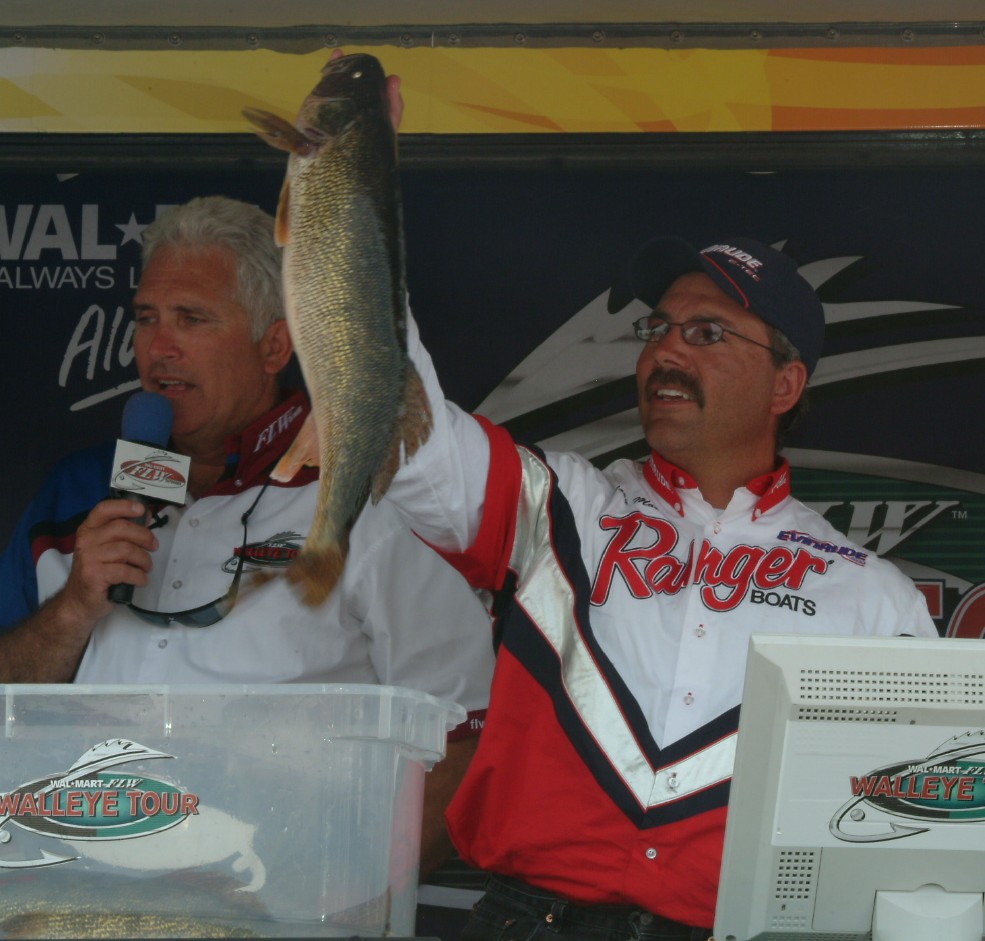Ask the Walleye Pro: Troy Morris

Q: I regularly fish a Western reservoir that is great for a night bite. Pitching and trolling crankbaits shallow at dusk and dark produces large quantities of walleye and lots of big pigs. However, during the day I can’t seem to locate them. Where do you suppose they disappear to?
-Steve Stelling, Great Falls, Mont.
A: Steve, it sounds like you are on a typical evening walleye feeding frenzy. Usually the fish do not go far and can be caught during the day; it is just a matter of experimenting with different techniques and locations. Typically during mid-morning and daytime hours, fish will migrate to deep structure drop-offs that are near steep banks or deep, rocky points. Try slowing your presentations down with a Lindy set up or jigging these deep water breaks with live bait such as creek chubs, crawlers, or even just a minnow. Another challenge is using your electronics and trusting them to locate those deeper fish. When you find them you will be pleased with your results.
Q: I have a question about using planer boards on Lake Erie. When you have a fish on do you prefer to reel in some line before you take the reel out of the rod holder to make the line tighter? What else does this accomplish?
-Jeffrey Sather, Montevideo, Minn.
A: Jeffrey, this is a great question as I learned this exact technique when I started fishing the Great Lakes with planer boards. Through my experience, it is critical to reel the slack out of the line to the planer board before taking the rod out of the rod holder. This accomplishes two things; first it takes the stretch out of the mono line and second it sets the hook deeper. When you do remove your rod try to keep the line tight, I usually have my drag set very tight and use a slow and steady retrieve. In addition, leave your boat motor in gear to keep your boat moving forward. The position of the planer board itself will provide enough resistance to fight the fish. When the board is removed, back off the drag and enjoy the fight as you bring the fish into the net.
Q: I have a 2003 619 Ranger with 200 Mercury EFI with a 21P Tempest Prop. What can I do to get more bow lift? Would you suggest a different type of prop, if so what kind?
-Shane, Pierre, S.D.
A: Shane, there are a lot of props on the market today that provide different functions to increase performance to a particular rig. First you need to make sure you are at the engine manufacturer’s recommended RPM. Second is to make sure the majority of the weight in the boat is to the rear. If you already have the weight in your Ranger evenly distributed, a jack plate to offset the center of gravity could also help. Don’t worry so much about the pitch of the prop, but focus on the RPM output. Mercury has some new props on the market today such as the Rev 4; which in my opinion is one of the best props on the market today for walleye boats like your Ranger 619. Not everything can be solved by mathematics, and not everyone’s boat is set up the same so sometimes it is a matter of trial and error. I hope there is something here that you can use.
Q: Why does handlining work better in dirty water on the Detroit River? If it’s so good in dirty water why isn’t it the best way in clear water?
-Walleye fan
A: With the handlining technique in shallow river waters, your baits are positioned 15 feet to 30 feet behind the boat in the prop wash. The technique is designed to move very slowly upstream in a river system and to create an “S” motion as you move forward. It is also designed to keep your boat positioned over a school of fish as long as possible in the “fish zone”. Dirty water helps prevent the fish from spooking easily and allows you to put the stick bait in their face enticing them to bite. In contrast, clear water allows the fish to see much more of your lines and the boat spooks the fish to the sides, thus taking your lines out of the “fish zone”.